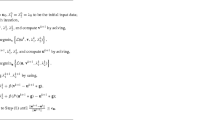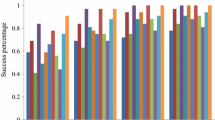Abstract
Non-blind deconvolution has been a long-standing challenge of both image structures preservation and blur and noise removal. However, most existing methods conduct the direct deconvolution on the degraded image, and overlook the difference between low-frequency and high-frequency of the image. Based on the observation that high-frequency (e.g., edges and structures) is more important than low-frequency in image deblurring, we present a novel method for non-blind deconvolution by incorporating the ℓ 1 -norm fidelity of image high-frequency. Firstly, the ℓ 1 -norm fidelity of image high-frequency is proposed in the overall objective function for image structures preservation and noise suppression, and then alternating minimization iterative method is employed to estimate high-frequency components of the image. Secondly, high-frequency estimations are taken as constraint terms, and least square integration and fast fourier transform are efficiently exploited to recover the ideal image. Finally, experimental simulations demonstrate that the proposed algorithm outperforms other state-of-the-art methods in both subjective and objective assessments.



















Similar content being viewed by others
References
Almeida MSC, Almeida LB (2010) Blind and semi-blind deblurring of natural images. IEEE Trans Image Process 19(1):36–52
Bar L, Brook A, Sochen N, Kiryati N (2007) Deblurring of color images corrupted by impulsive noise. IEEE Trans Image Process 16(4):1101–1111
Bioucas-Dias JM, Figueiredo MAT (2007) A new TwIST: two-step iterative shrinkage/thresholding algorithms for image restoration. IEEE Trans Image Process 16(12):2992–3004
Caiszar I (1991) Why least squares and maximum entropy? an axiomatic approach to inference for linear inverse problems. Ann Stat 8(4):2032–2066
Chan T, Esedoglu S, Park F, Yip A (2005) Recent developments in total variation image restoration. Mathematical Models of Computer Vision, 17
Cho S, Lee S (2009) Fast motion deblurring. ACM Trans Graph 28(5):1–8
Dong W, Zhang L, Shi G (2011) Centralized sparse representation for image restoration. In: Proceedings of 2011 I.E. international conference on computer vision, pp. 1259–1266
Fergus R, Singh B, Hertzmann A, Roweis ST, Freeman WT (2006) Removing camera shake from a single photograph. ACM Trans Graph 25:787–794
Gonzalez RC, Woods RE (2001) Digital image processing. Prentice-Hall, New Jersey
Kim TH, Lee KM (2015) Generalized video deblurring for dynamic scenes. In: Proceedings of 2015 I.E. conference on computer vision and pattern recognition, pp 5426–5434
Krishnan D, Fergus R (2009) Fast image deconvolution using hyper-laplacian priors. In: Proceedings of Neural Information Processing Systems, pp 1033–1041
Krishnan D, Tay T, Fergus R (2011) Blind deconvolution using a normalized sparsity measure. In: Proceedings of 2011 I.E. conference on computer vision and pattern recognition, pp 2657–2664
Levin A, Weiss Y, Durand F, Freeman WT (2009) Understanding and evaluating blind deconvolution algorithms. In: Proceedings of 2009 I.E. conference on computer vision and pattern recognition, pp 1964–1971
Li J, Shen Z, Yin R, Zhang X (2012) A reweighted L2 method for image restoration with Poisson and mixed Poisson-Gaussian noise. UCLA Computational and Applied Mathematics Reports, 12–84
Lustig M, Donoho D, Pauly JM (2007) Sparse MRI: the application of compressed sensing for rapid MR imaging. Magn Reson Med 58(6):1182–1195
Nie L, Wang M, Zha ZJ, Chua TS (2012) Oracle in image search: a content-based approach to performance prediction. ACM Trans Inf Sys 30(2):13
Nie L, Yan S, Wang M, Hong R, Chua, TS (2012) Harvesting visual concepts for image search with complex queries. In: Proceedings of 2012 ACM international conference on Multimedia, pp 59–68
Osher S, Rudin L, Fatemi E (1992) Nonlinear total variation based noise removal algorithms. Phys D 60(1–4):259–268
Pan J, Hu Z, Su Z, Yang MH (2014) Deblurring text images via L0-regularized intensity and gradient prior. In: Proceedings of 2014 I.E. conference on computer vision and pattern recognition, pp 2901–2908
Patel VM, Maleh R, Gilbert AC, Chellappa R (2012) Gradient-based image recovery methods from incomplete Fourier measurements. IEEE Trans Image Process 21(1):94–105
Schmidt U, Rother C, Nowozin S, Jancsary J, Roth S (2013) Discriminative Non-blind Deblurring. In: Proceedings of 2013 I.E. conference on computer vision and pattern recognition, pp 604–611
Shan Q, Jia J, Agarwala A (2008) High-quality motion deblurring from a single image. ACM Trans Graphics 27(3):73-1-73-10
Shi J, Xu L, Jia J (2015) Just Noticeable Defocus Blur Detection and Estimation. In: Proceedings of 2015 I.E. conference on computer vision and pattern recognition, pp 657–665
Tai YW, Lin S (2012) Motion-aware noise filtering for deblurring of noisy and blurry images. In: Proceedings of 2012 I.E. conference on computer vision and pattern recognition, pp 17–24
Tikhonov A (1943) On the stability of inverse problems. Dokl Akad Nauk SSSR 39(5):195–198
Wang Z, Bovik AC, Sheikh HR, Simoncelli EP (2004) Image quality assessment: from error visibility to structural similarity. IEEE Trans Image Process 13(4):600–612
Wang Y, Yang J, Yin W, Zhang Y (2008) A new alternating minimization algorithm for total variation image reconstruction. SIAM J Imag Sci 1(3):248–272
Xu L, Jia J (2010) Two-phase kernel estimation for robust motion deblurring. In: Proceedings of European Conf Comput Vis, pp 157–170
Xu L, Lu C, Xu Y, Jia J (2011) Image smoothing via L0 gradient minimization. ACM Trans Graph 30(6):174
Xu L, Zheng S, Jia J (2013) Unnatural L0 sparse representation for natural image deblurring. In: Proceedings of 2013 I.E. conference on computer vision and pattern recognition, pp 1107–1114
Yan M (2011) Restoration of images corrupted by impulse noise using blind inpainting and L0 norm. PhD Thesis, UCLA, USA
Yan M (2013) Restoration of images corrupted by impulse noise and mixed Gaussian impulse noise using blind inpainting. SIAM J Imag Sci 6(3):1227–1245
Yan C, Zhang Y, Dai F, Wang X, Li L, Dai Q (2014) Parallel deblocking filter for HEVC on many-core processor. Electron Lett 50(5):367–368
Yan C, Zhang Y, Dai F, Li L (2013) Highly parallel framework for HEVC motion estimation on many-core platform. In: Proceedings of 2013 I.E. Data Compression Conference, pp 63–72
Yan C, Zhang Y, Xu J, Dai F, Li L, Dai Q, Wu F (2014) A highly parallel framework for HEVC coding unit partitioning tree decision on many-core processors. IEEE Signal Proc Lett 21(5):573–576
Yan C, Zhang Y, Xu J, Dai F, Zhang J, Dai Q, Wu F (2014) Efficient parallel framework for HEVC motion estimation on many-core processors. IEEE Trans Circ Syst Video Technol 24(12):2077–2089
Yang J, Zhang Y, Yin W (2009) An efficient TVL1 algorithm for deblurring multichannel images corrupted by impulsive noise. SIAM J Sci Comput 31(4):2842–2865
Yang H, Zhu M, Niu Y, Guan Y, Zhang Z (2015) Dual domain filters based texture and structure preserving image non-blind deconvolution. In: Proceedings of 2015 I.E. conference on computer vision and pattern recognition, pp 705–713
Zhang H, Yang J, Zhang Y, Huang TS (2013) Image and video restorations via nonlocal kernel regression. IEEE Trans Cybern 43(3):1035–1046
Zhang J, Zhao D, Xiong R, Ma S, Gao W (2014) Image restoration using joint statistical modeling in a space-transform domain. IEEE Trans Circ Syst Video Technol 24(6):915–928
Zhong L, Cho S, Mextaxas D, Paris S, Wang J (2013) Handing noise in single image deblurring using directional filters. In: Proceedings of 2013 I.E. conference on computer vision and pattern recognition, pp 612–619
Zhu X, Milanfar P (2010) Automatic parameter selection for denoising algorithms using a no-reference measure of image content. IEEE Trans Image Process 19(12):3116–3132
Acknowledgments
This work was supported in part by the National Natural Science Foundation of China under Grants 61571382, 61571005, 81301278, 61172179, and 61103121, in part by the Guangdong Natural Science Foundation under Grant 2015A030313007, in part by the Fundamental Research Funds for the Central Universities under Grant 20720160075, 20720150169 and 20720150093, and in part by the Research Fund for the Doctoral Program of Higher Education under Grant 20120121120043.
Author information
Authors and Affiliations
Corresponding author
Rights and permissions
About this article
Cite this article
Zhuang, P., Huang, Y., Zeng, D. et al. Non-blind deconvolution with ℓ 1 -norm of high-frequency fidelity. Multimed Tools Appl 76, 23607–23625 (2017). https://doi.org/10.1007/s11042-016-4083-x
Received:
Revised:
Accepted:
Published:
Issue Date:
DOI: https://doi.org/10.1007/s11042-016-4083-x




